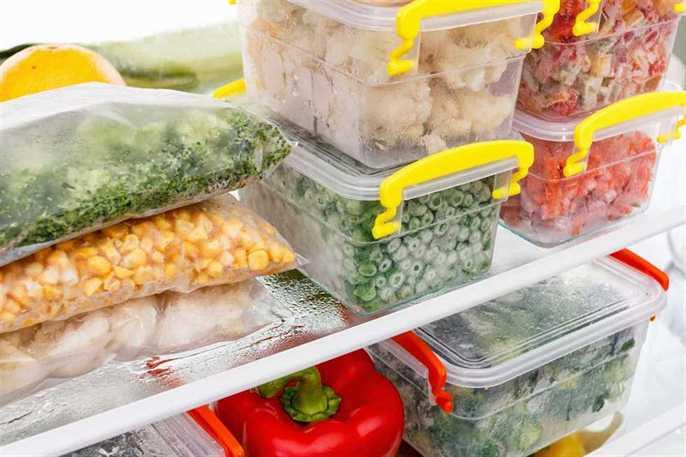You’re starving, and you open your fridge to assemble the quickest dinner possible. As your stomach growls, you take out the fresh head of lettuce you bought at the store today – only to find that it’s completely frozen! This is a major inconvenience; you have to wait until your food is thawed until you can eat it. On top of that, you may find that it tastes different or has an altered texture. This is because when food freezes, the enzymes that give it colour and taste are inactivated. Why does this occur, and how do you prevent it from happening in the future?
Too much food is blocking air circulation. It’s so satisfying to finish grocery shopping, open your fridge, and see your shelves lined with fresh produce. But if your fridge is too full, then the air vents will be blocked. Since these vents are usually located at the back of your fridge, this explains why food in this area is freezing: it’s exposed to the coldest air, while food at the front may not be cold enough. The same thing can happen with the opposite problem: not having enough food in your fridge. Since the cold air is not absorbed by food items, it sinks to the bottom shelf and collects there, which can freeze the produce nearby.
The temperature is set too low. Health Canada recommends that your fridge should maintain a temperature of 4°C (or 40°F). If it’s lower than this, then it’s getting into freezer-level degrees of cool. This is probably the most common reason why your fridge is freezing food. Take note of the temperature recording on your fridge’s thermostat to see if it falls within the recommended guidelines.
Air is leaking from the doors. Do your fridge doors seal tightly? If they don’t, the cold air that your appliance generates is leaking out, and it will need to work harder to keep the temperature constant. This means that your fridge may make the air too cold and that’s why your food is freezing. Place your hands in front of the fridge doors – if you feel a gust of cold air, you might have a sealing problem.
If you’ve identified that your fridge suffers from one of these problems, we have good news: there are a few solutions you can try. First, adjust the temperature of your fridge to 4°C (or 40°F). If food is blocking the airflow, try to rearrange your items so that they don’t touch any air vents and are distributed evenly. Throw out any old food that may be taking up space. For faulty doors, try to clean around the edges to make sure no debris is interfering with the seal.
Have you tried these fixes, but are still finding frozen goods in your fridge? Then you may be dealing with a malfunctioning thermostat, motor failure, or a faulty door seal. When your fridge is causing you trouble, it’s time to search for Winnipeg appliance repair. Mike’s Quality Appliance Repair can help get your fridge back in working order. We can repair thermometers, fix motor malfunctions, replace door seals, and more. Give us a call, and we’ll find what’s making your fridge so frigid!

